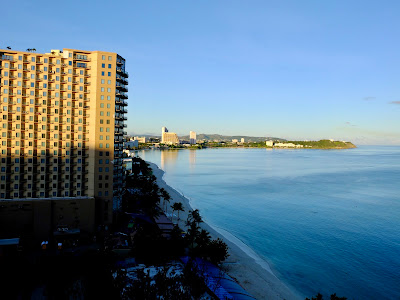World Flight 100 can be viewed as a journey of successive flights, each taking Bob and I closer to our ultimate destination: to circumnavigate the world and where possible, fly along the same route taken by the first round-the-world flyers 100 years ago. Their epic journey in 1924 began and ended in Seattle, USA, and took 175 days. Our commemorative circumnavigation flying my trusty Piper Comanche ZK-BAZ started at Mount Hagen (AYMH), the place where Bob lives in Papua New Guinea. We’re due back there on the 28th of September, making our circumnavigation journey a duration of 120 days.
I am writing this blog during a six-week layover in the United Kingdom—a pre-planned halfway break while Bob goes back to Mount Hagen. Based on the total journey duration, today is precisely halfway. Sixty days ago we flew out of Mount Hagen heading for Guam. In just sixty days from now we arrive back in Mount Hagen thus completing a westward circumnavigation of the world. One could say, “We’re halfway there.”
Reflecting on the first half of this journey, we’ve already experienced a multitude of challenges and triumphs. Flying over vast ocean expanses, navigating through diverse weather conditions, and touching down in various countries have been both thrilling and demanding. Each leg of the trip brought new encounters, from meeting aviation enthusiasts and fellow pilots to exploring different cultures and landscapes.
The spirit of adventure that fuelled the original 1924 flight has undoubtedly been a guiding force. Their pioneering flight, fraught with uncertainty and the unknown, was a testament to human ingenuity and determination. Today, while we have advanced technology and improved navigation systems at our disposal, the essence of exploration and the sense of pushing boundaries remain unchanged.
A layover in the UK has provided an opportunity to perform essential maintenance on the Comanche, ensuring it remains in top condition for the remainder of the journey. The time has also been an opportunity to rest, reflect, and prepare mentally and physically for the next series of flights that will take us over the North Atlantic, across North America, and finally back into the Western Pacific region through Russia. We might even be fortunate enough along the way to meet up with the only other pilot presently flying round the world. He is American aviator Pieter Nel piloting his single engine Mooney N5810T. Like ourselves, Pieter is doing the much less flown westwards circumnavigation and also crossing the Northern Pacific along the very remote Aleutian Islands.
Meanwhile, stay tuned for more updates as World Flight 100 continues, flight by flight ever closer to completing our homage to those who dared to dream of flying around the world a century ago. As we often say; “We’re just two young aviators privileged to follow in their footsteps—or, rather, flight paths”. Here's to the next 60 days of exploration, discovery, and the enduring spirit of aviation.
Countryside where even horses stop by the ‘local’ for a pint.



















